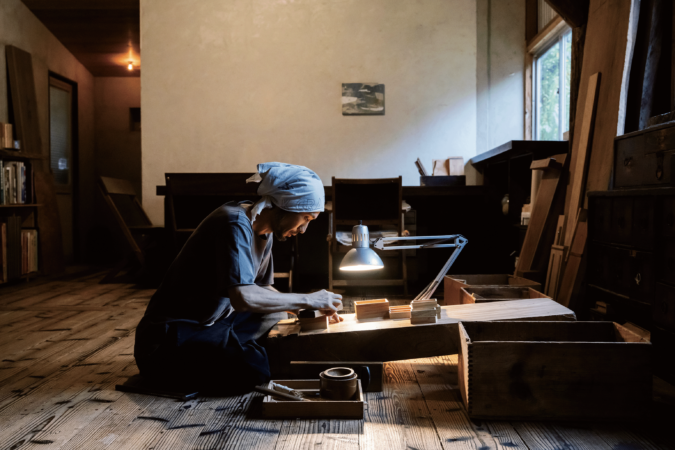The Trendiest ‘Sento’ and Saunas in Tokyo
The bath culture remains vibrant in the capital city, where public baths and saunas designed by renowned architects are continuously opening.
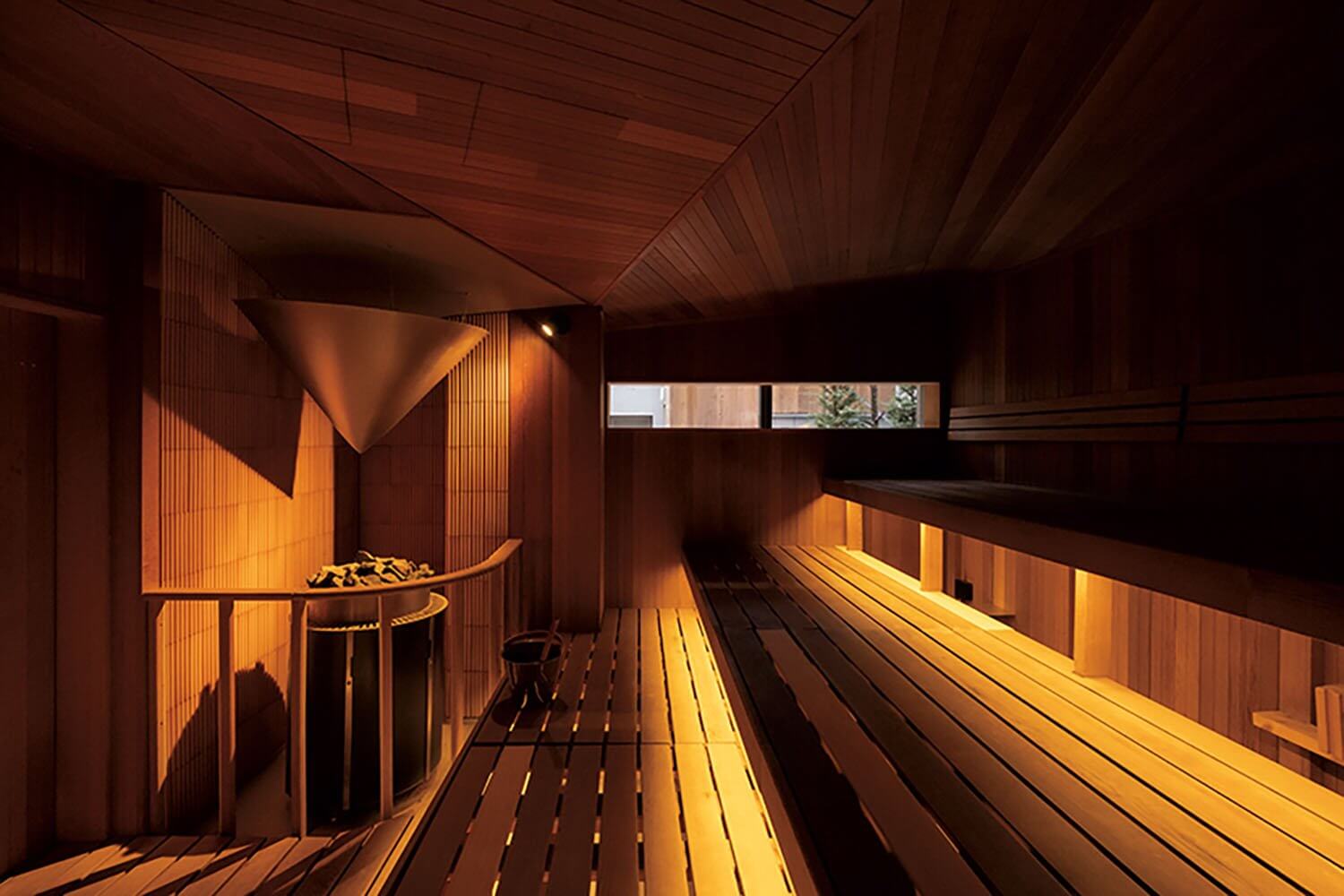
Shibuya SAUNAS
Sento, traditional public baths, have been an integral part of Tokyo culture. Once significant social spaces during the Edo period (1603-1868), these public baths are now being embraced by designers and are experiencing a resurgence in popularity. Saunas, too, are on the rise in the capital, with new, innovative spaces continually emerging.
Although bath culture is deeply rooted in Japan’s history, it was during the early Edo period that sento—public baths accessible for a modest fee—first emerged. At that time, few households had bathrooms, making the presence of sento essential. Over time, their numbers peaked, from around 600 establishments at the end of the Edo period to 2,600 in the 1960s. By 2022, only 462 remained, a decline attributed to the rise of private bathrooms and changing lifestyles. Nevertheless, many sento in Tokyo have managed to evolve by combining tradition with modern design, thus preserving the essence of this culture.
At the same time, saunas are gaining increasing popularity in the capital. This is not surprising, as some Edo-period sento were actually steam baths known as mushi-buro, resembling saunas. The residents of Edo already had an affinity for these steam baths. Today, the evolution of saunas in Tokyo is characterized by streamlined spaces and a quest for privacy, with many establishments now offering private rooms.
Koganeyu (Kinshicho District)
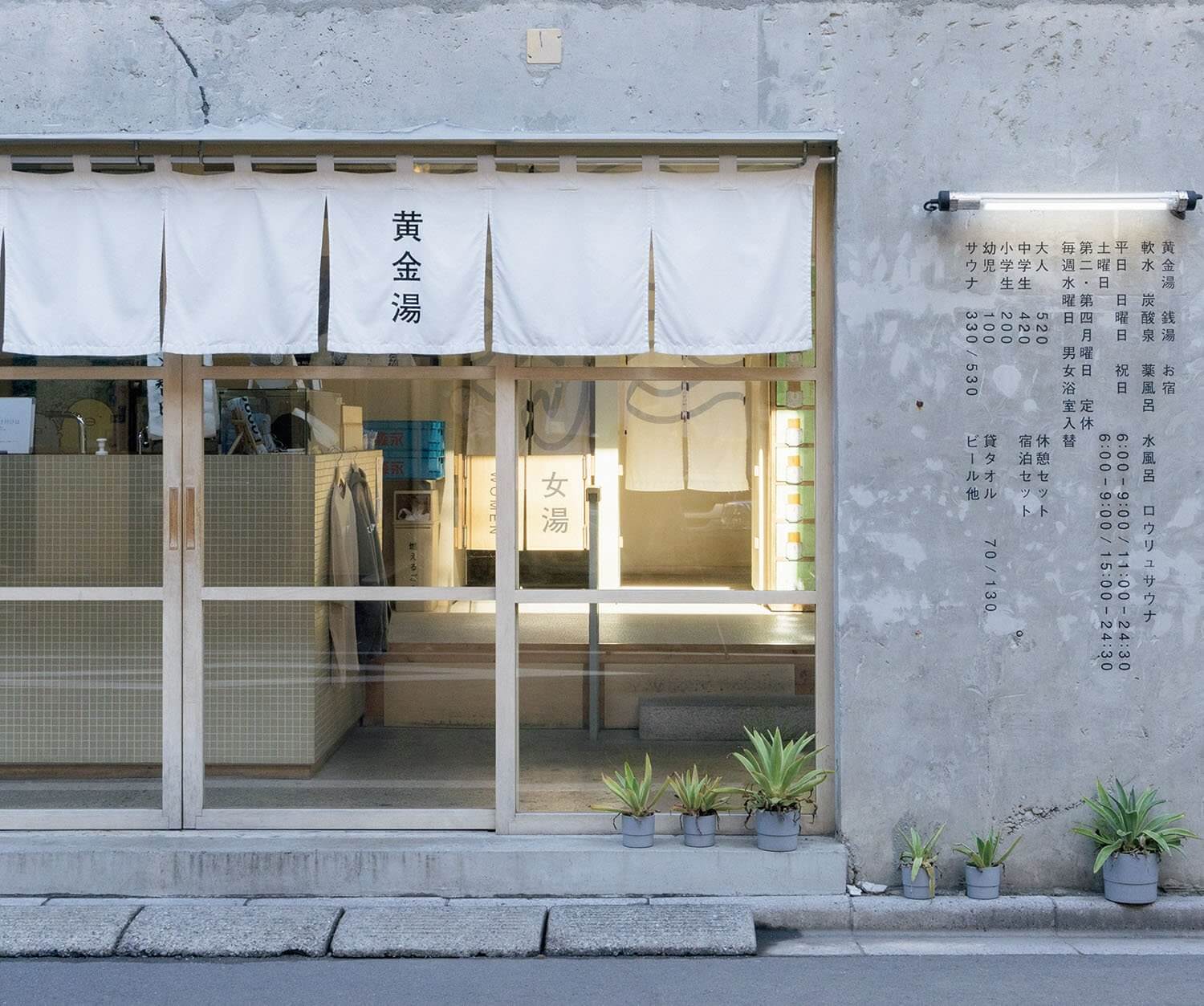
A neighborhood ‘sento’ deeply rooted in the local community, Koganeyu attracts a loyal clientele of long-time patrons as well as an increasing number of younger visitors.
A Designer ‘Sento’ Setting New Trends
Established in 1932, Koganeyu underwent a renovation in 2020 under the artistic direction of Hiroko Takahashi, with interiors designed by Schemata Architects. The sento now features a fresco of Mount Fuji by artist Yoriko Hoshi, making it one of the trailblazers in cutting-edge sento design.
Designed to be a ‘glocal sento that fosters joy,’ it captivates not only with its baths and saunas but also with the Bandai bar (named after the small reception area at the entrance of the baths where the sento’s reception agent is stationed), which features a DJ and craft beers. Combining both a bathing establishment and a lively venue, Koganeyu has played a role in redefining the sento as a space for relaxation and culture.
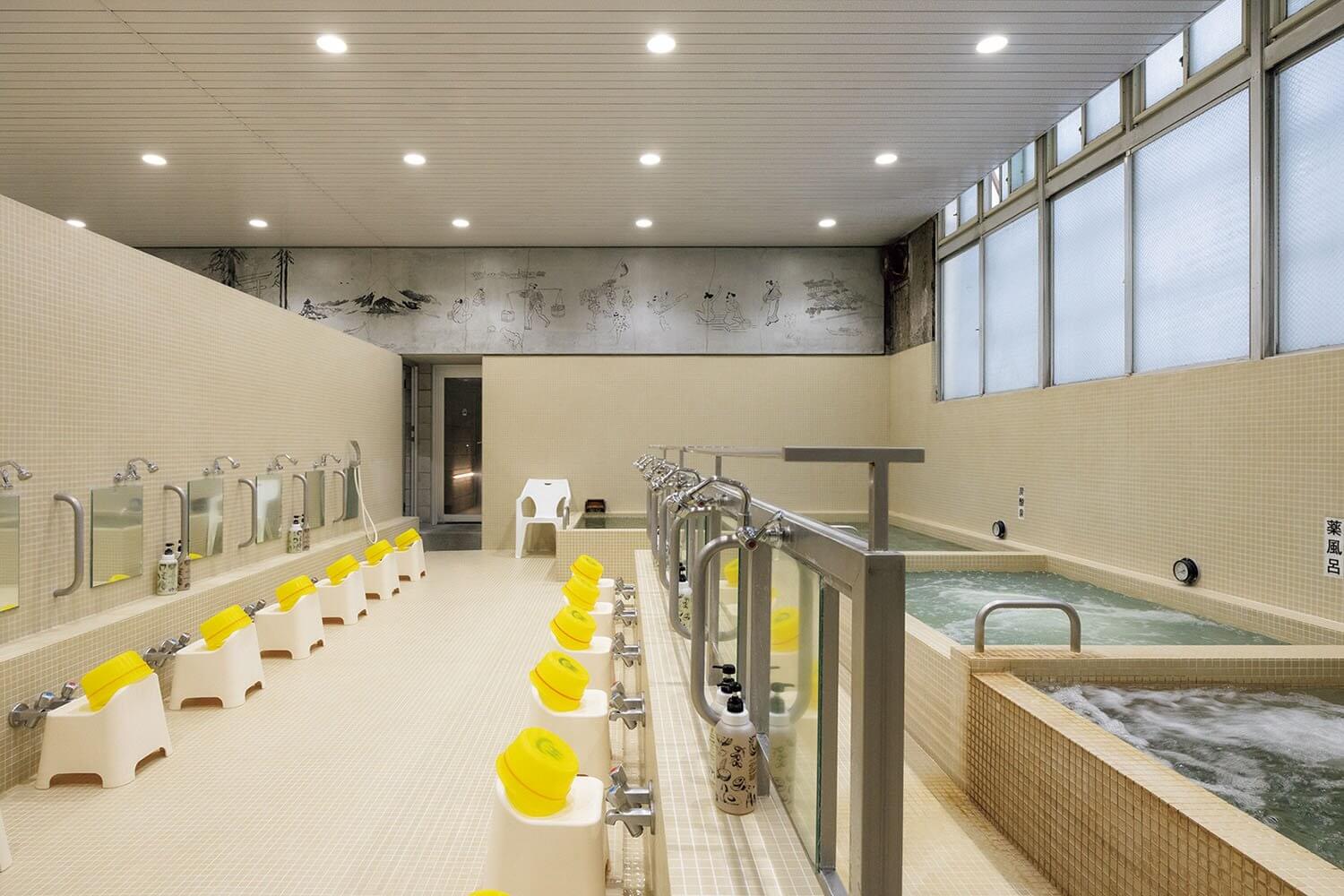
A spacious and open bathing area includes classic hot baths, moderately heated baths, whirlpool baths, and a particularly popular medicinal bath with a daily rotation.
Komaeyu (Komae District)

Located in an open space, visitors are welcomed by a classic mosaic representation of Mount Fuji right at the entrance.
A New Take on ‘Sento’ as a Cultural Space
After nearly 70 years, Komaeyu was renovated in 2023 by Schemata Architects to become a venue dedicated to exploring sento culture. Designer Rikako Nagashima decorated the walls and lockers, skillfully utilizing tile grout to create patterns.
The bandai area extends into a long counter serving meals and craft beers. Monthly markets are also held here, making Komaeyu an essential local community space with a unique atmosphere.
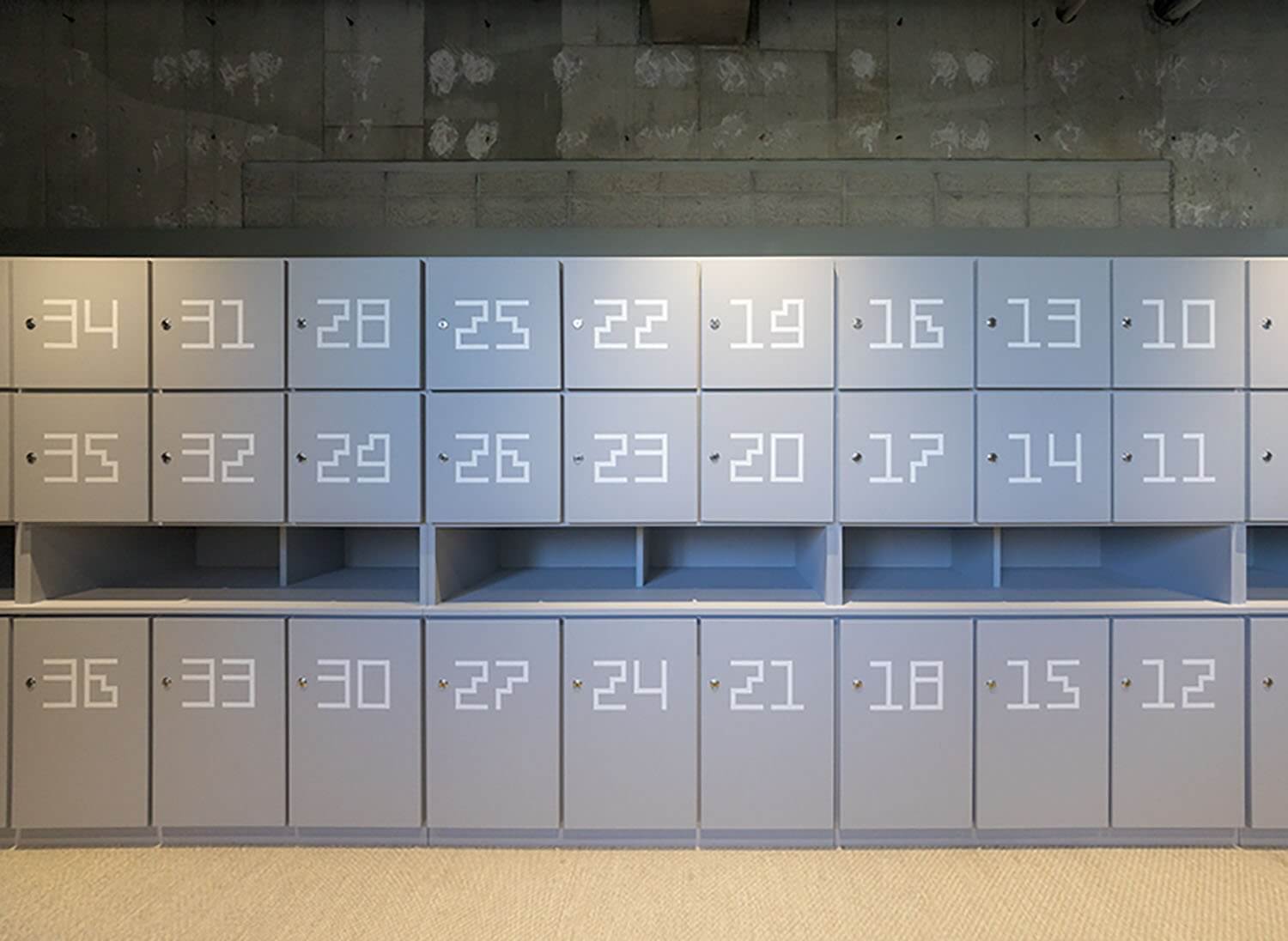
The typography of the lockers was created by Rikako Nagashima.
Shibuya SAUNAS (Shibuya District)

Immerse yourself in a forest-like relaxation space bathed in light.
A Superior Quality Sauna Designed in Every Detail
The current sauna craze in Japan followed the success of the 2019 TV adaptation of the manga Sado, originally created by Katsuki Tanaka, where three characters share their sauna experiences. After relaxing in the steam bath and taking a cold bath, the protagonists utter the term totonotta, meaning ‘balanced’ or ‘finally in harmony,’ referring to a state of relaxation and unity between body and mind. This expression has become synonymous with sauna culture.
Manga artist Katsuki Tanaka oversaw the creation of Shibuya SAUNAS, a space dedicated to the ultimate relaxation experience. Its minimalist interior is designed to minimize visual distractions, with every detail aimed at maximizing comfort, such as the absence of sharp angles on surfaces in contact with the skin in the relaxation areas. With nine different saunas and two types of cold baths, accessible to men and women alternately for a complete experience, the establishment offers top-notch amenities. A welcome modern wellness retreat in the heart of Shibuya.

Featuring a sound system developed in collaboration with WHITELIGHT, SOUND SAUNA provides an extraordinary audio experience.
Solo Sauna Tune (Kagurazaka District)
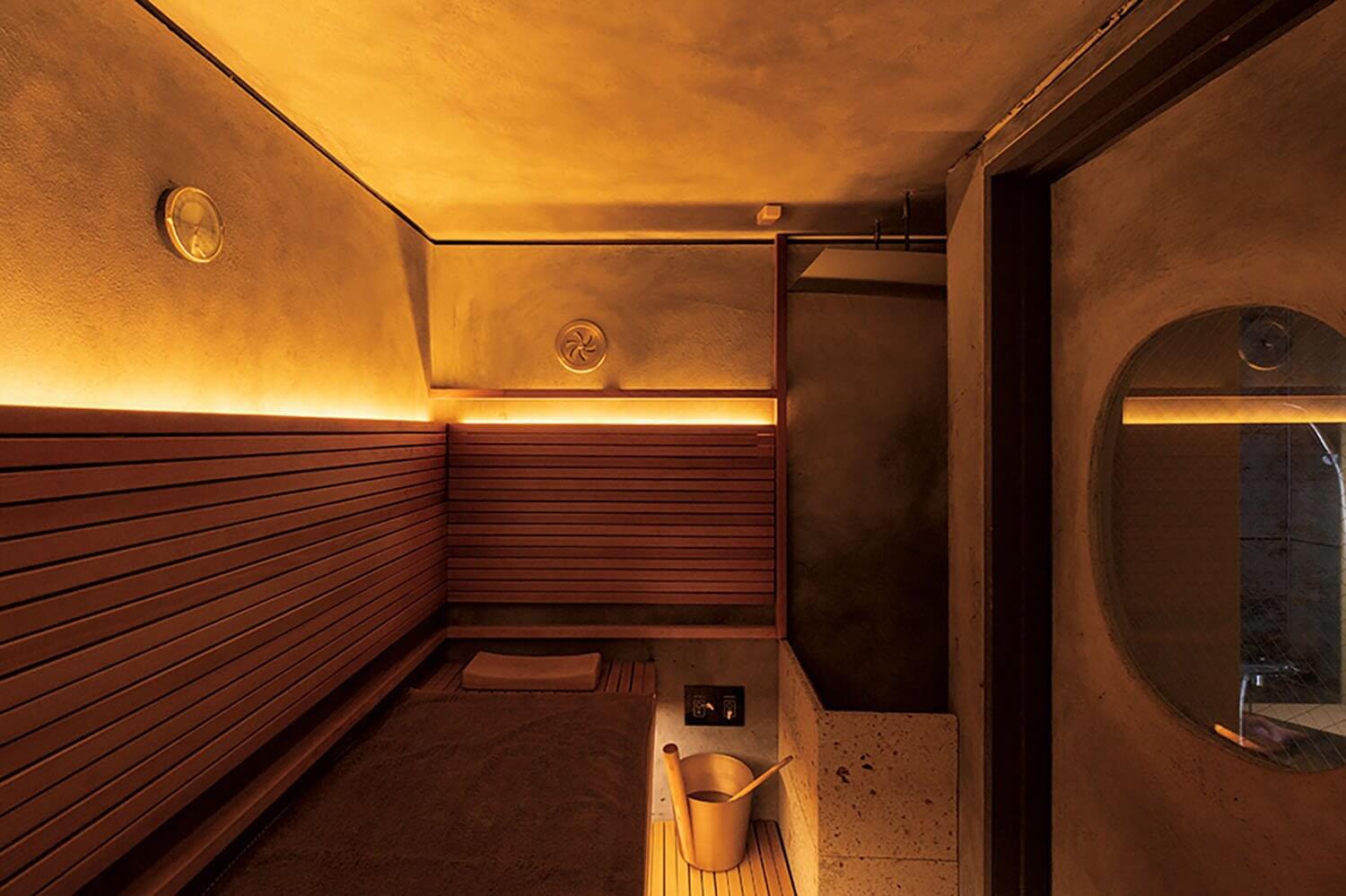
The charm of an individual sauna lies in the almost total freedom one can experience in a private space.
Pioneering Urban Individual Saunas
Solo Sauna Tune, Japan’s first individual sauna, was created to allow each person to enjoy the sauna experience on their own terms.
During the development phase, every detail was meticulously planned and every space optimized using virtual reality, from the quality of towels designed for lounging in the sauna to the custom soundtrack recorded by the owner in Yakushima. This place offers a true private sanctuary for relaxation.
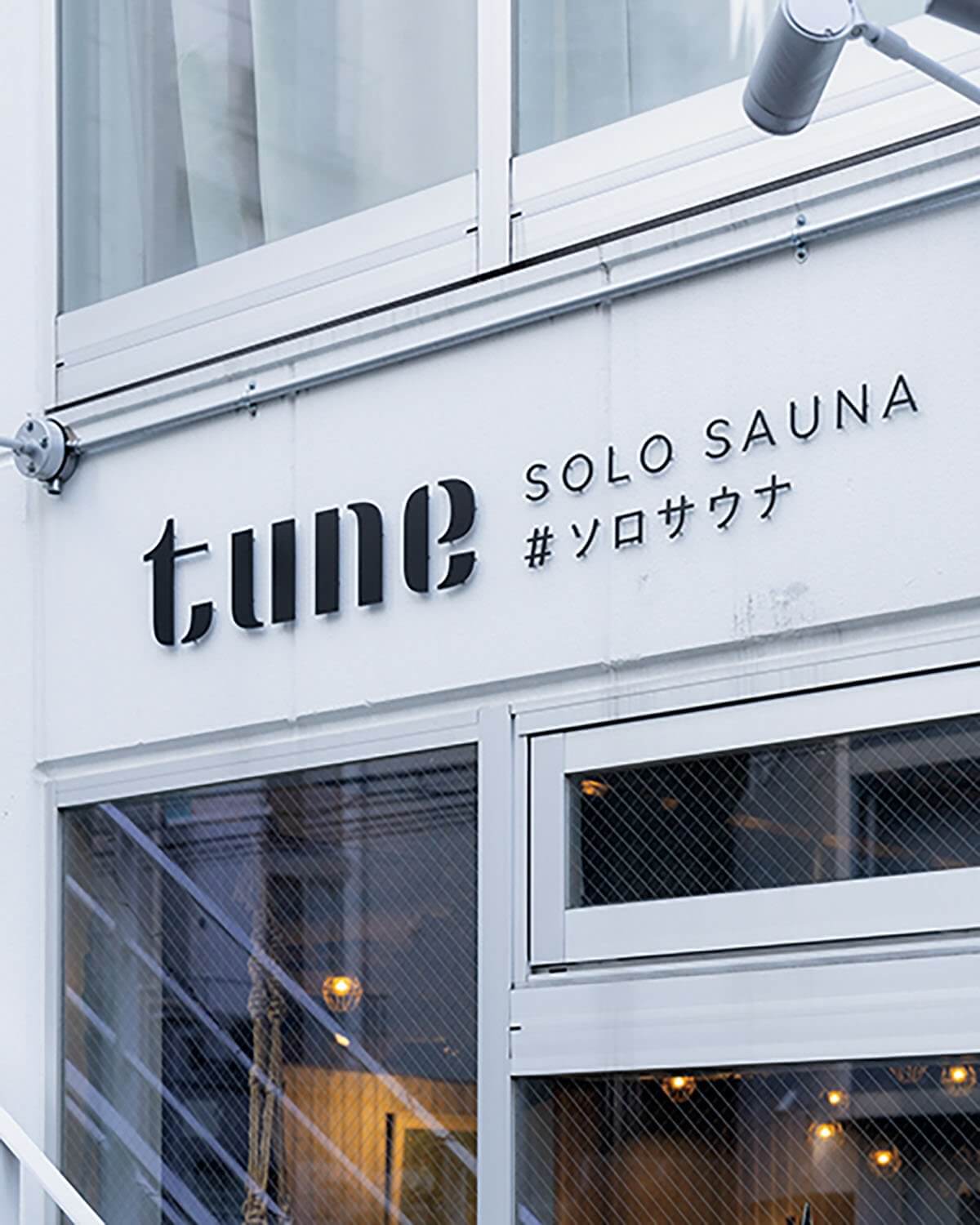
Located in the area known as ‘Ura-Kagurazaka’ (hidden Kagurazaka).
Sway (Gaienmae District)
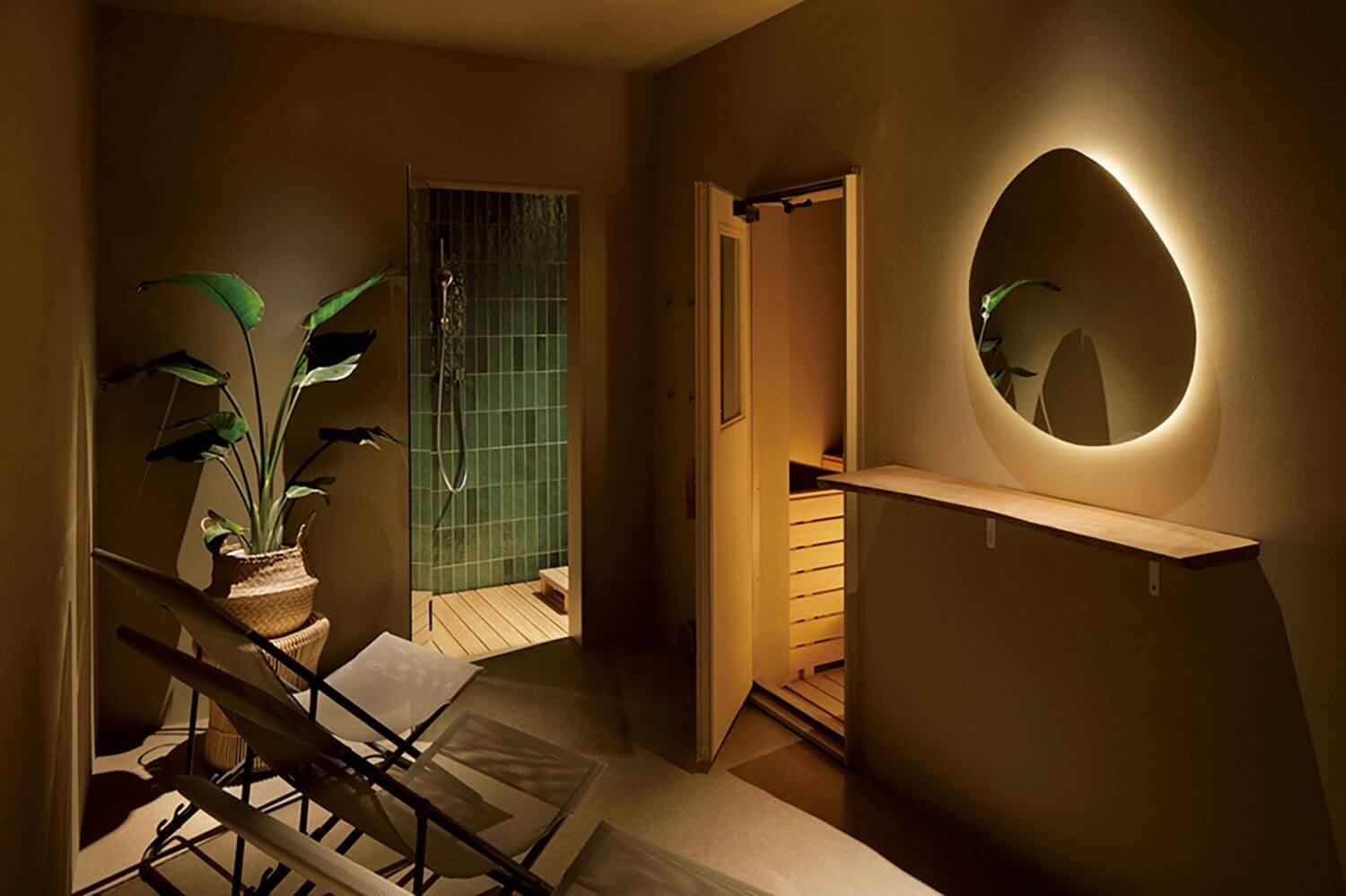
A space adaptable to various uses, ranging from individual rooms to group areas.
A Relaxation Space Harmonized with Nature
Sway, the first private sauna in Gaienmae, is a space where every detail evokes nature. The door handle is crafted from persimmon wood, a noble essence, as is the counter, sculpted from Japanese elm (keyaki).
The signage is also made of clay, giving a raw character to the environment. This ambiance, combining earth, wood, and stone, invites a sensory experience and a reconnection with nature, away from the urban bustle.
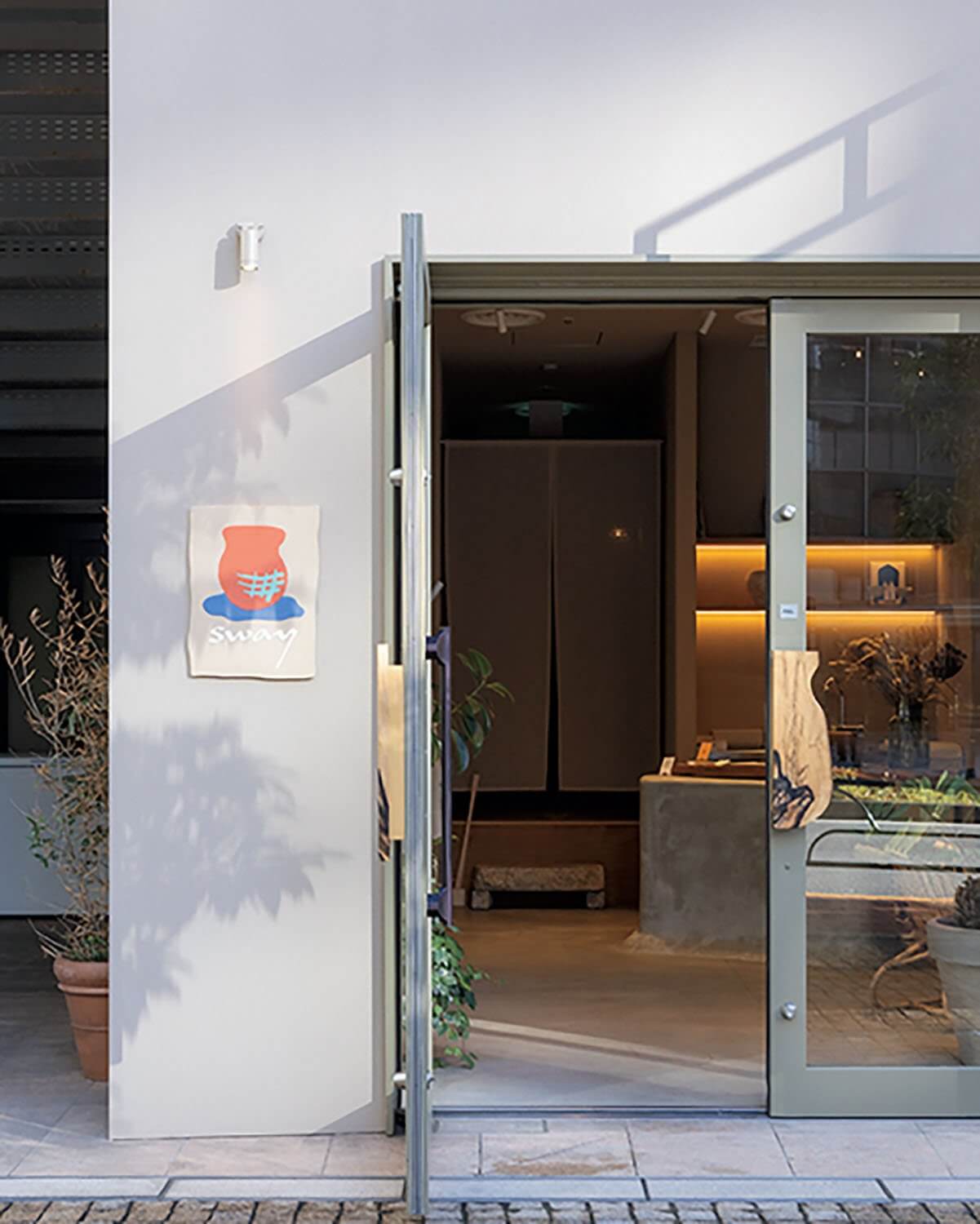
A spacious entrance opening onto the street.
BAR SAUNA (Daikanyama District)
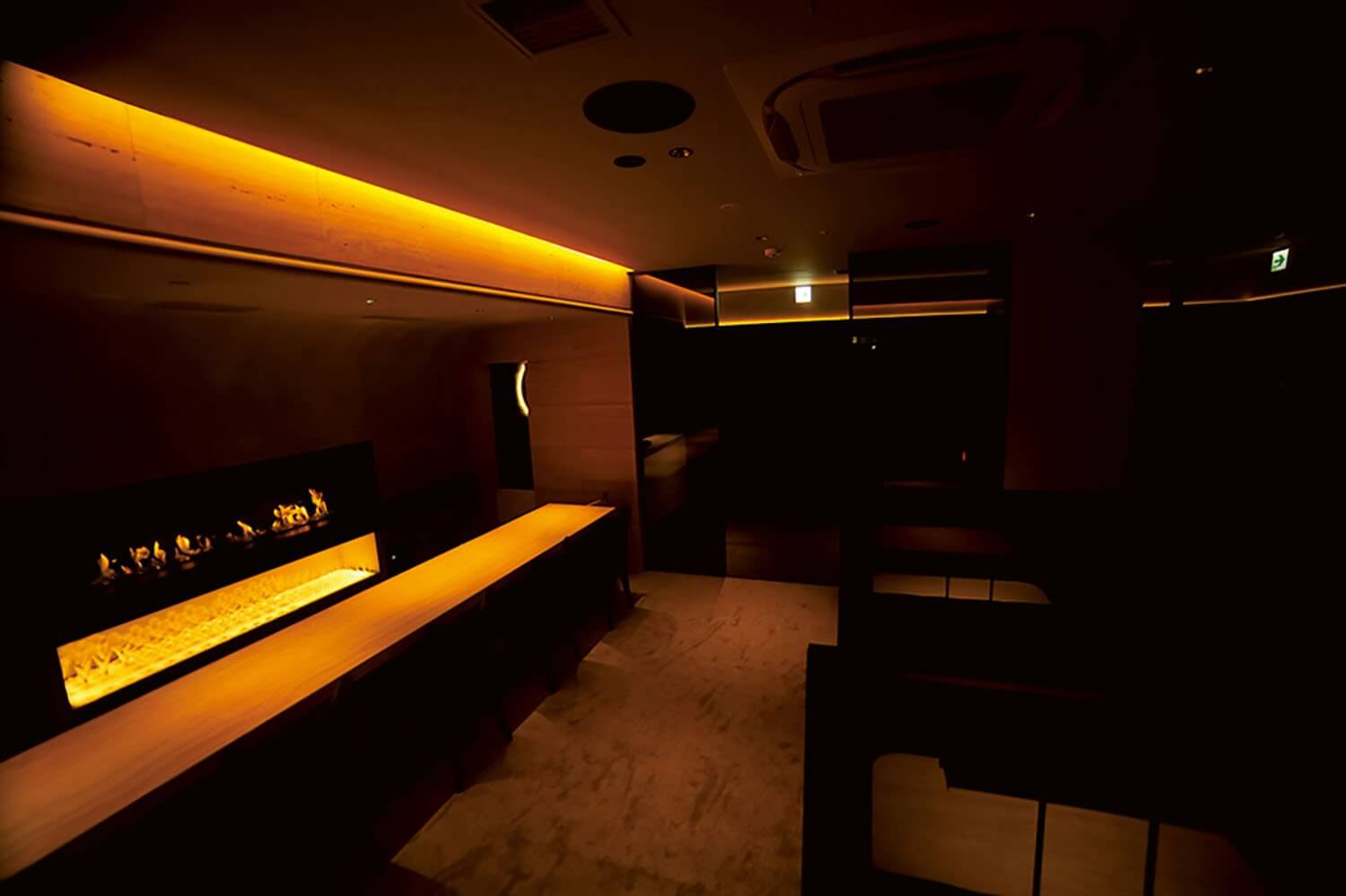
A bar space where soft lighting and curved walls create an enveloping sensation.
A Sophisticated Membership-Only Venue for Relaxation and Conversation
At BAR SAUNA, after enjoying a sauna and a cold bath in a quiet individual room, visitors are invited to relax barefoot on a soft carpet in a lounge bar with a cozy atmosphere and a fireplace.
There’s nothing like a private space to have a quiet conversation with loved ones after a relaxation session. A more exclusive version of the Tokyo sauna experience.
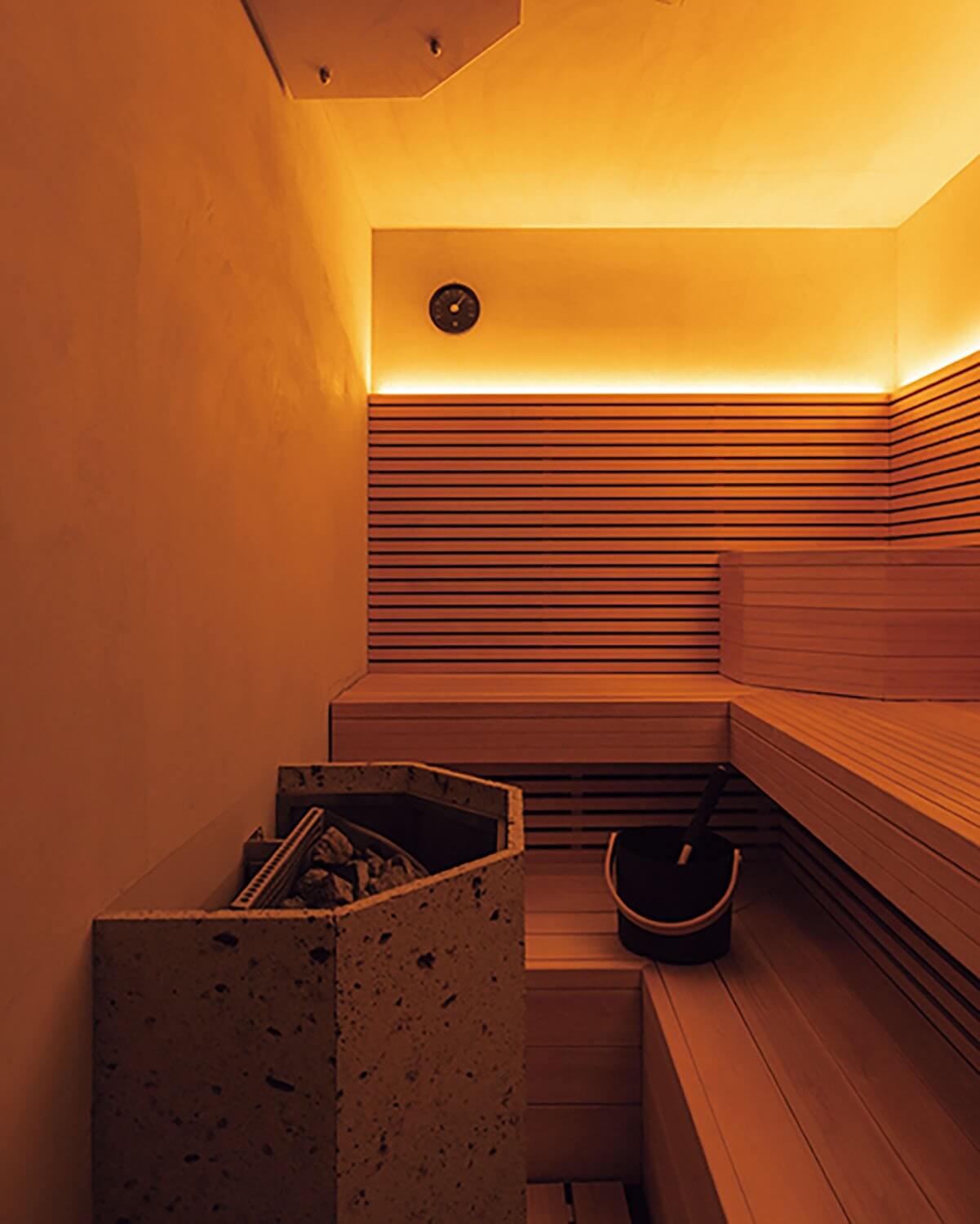
In a private room, guests can practice ‘löyly’ (pouring water on the hot stones of the sauna) at their leisure.
Sauna Tokyo (Akasaka District)
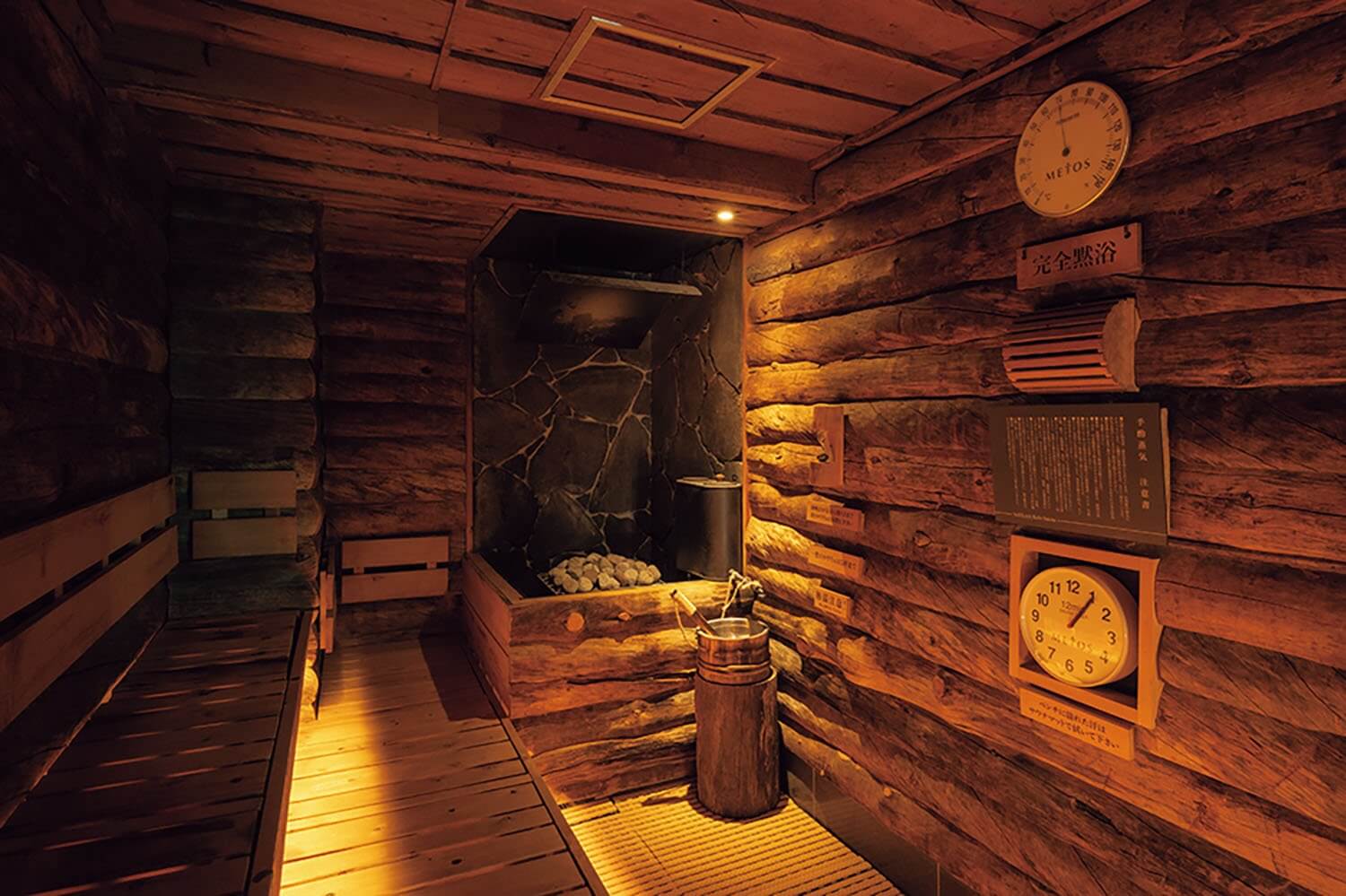
A sauna made of Kelo wood.
An Innovative Establishment, Heir to Edo Bath Culture
Beyond the entrance, resembling that of a ryokan, lies a changing room with tatami flooring. Sauna Tokyo draws from the essence of traditional Japanese culture. It features the largest sauna in Tokyo, accommodating up to 40 people.
Among the other four steam baths, one sauna is made of Kelo wood, a ‘gem essence’ highly prized in Finland. Two other rooms offer a nostalgic experience with a Showa-style sauna (1926-1989) featuring an infrared stove and a sauna inspired by the Edo period with its todanaburo steam bath heated from the floor. A place to experience the evolution of steam baths through time.
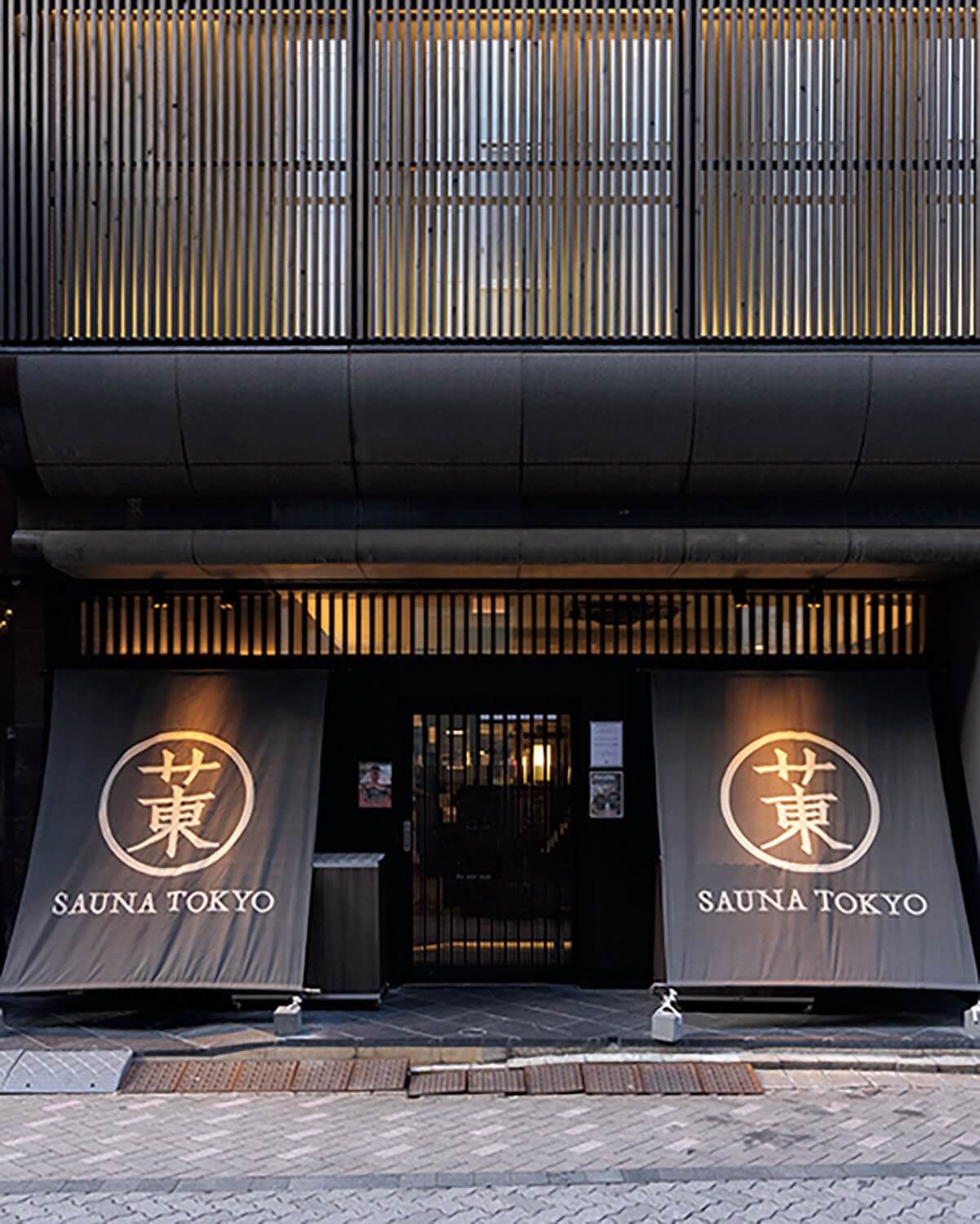
An entrance imbued with the atmosphere of Edo. The logo design was created by Design AM.
TRENDING
-
Hiroshi Nagai's Sun-Drenched Pop Paintings, an Ode to California
Through his colourful pieces, the painter transports viewers to the west coast of America as it was in the 1950s.

-
A Craft Practice Rooted in Okinawa’s Nature and Everyday Landscapes
Ai and Hiroyuki Tokeshi work with Okinawan wood, an exacting material, drawing on a local tradition of woodworking and lacquerware.

-
The Tattoos that Marked the Criminals of the Edo Period
Traditional tattoos were strong signifiers; murderers had head tattoos, while theft might result in an arm tattoo.

-
David Bowie Dressed by Kansai Yamamoto
The English singer was strongly influenced by 'kabuki' theatre and charged the Japanese designer with creating his costumes in the 1970s.

-
‘Seeing People My Age or Younger Succeed Makes Me Uneasy’
In ‘A Non-Conformist’s Guide to Surviving Society’, author Satoshi Ogawa shares his strategies for navigating everyday life.


